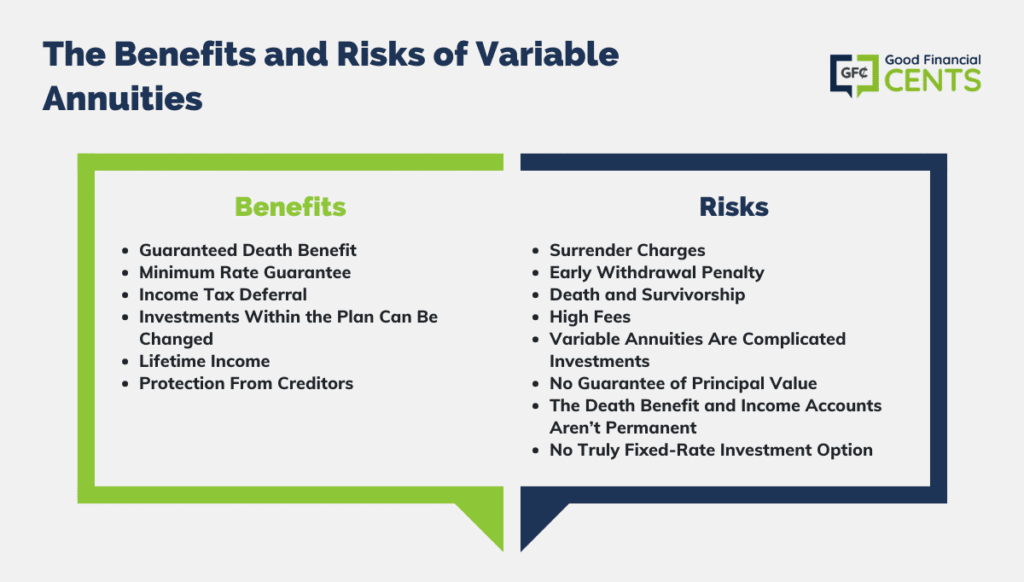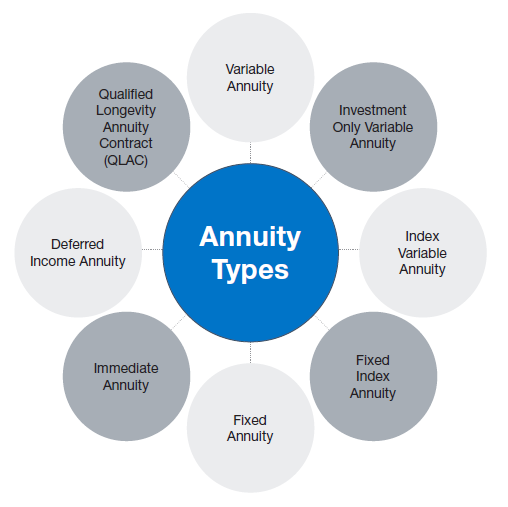All Categories
Featured
Table of Contents
The settlement may be invested for growth for a lengthy period of timea solitary costs postponed annuityor invested for a short time, after which payout beginsa single costs instant annuity. Solitary costs annuities are frequently moneyed by rollovers or from the sale of a valued property. An adaptable premium annuity is an annuity that is meant to be moneyed by a collection of repayments.
Proprietors of dealt with annuities recognize at the time of their acquisition what the worth of the future capital will certainly be that are produced by the annuity. Undoubtedly, the variety of capital can not be recognized ahead of time (as this relies on the contract owner's life expectancy), however the assured, fixed rate of interest at least provides the owner some degree of assurance of future revenue from the annuity.
While this difference appears simple and simple, it can dramatically impact the value that a contract proprietor inevitably stems from his/her annuity, and it develops substantial unpredictability for the contract proprietor - How fixed annuities work. It likewise usually has a material effect on the degree of costs that an agreement proprietor pays to the issuing insurance provider
Fixed annuities are often used by older capitalists that have actually limited properties however who want to offset the risk of outliving their properties. Set annuities can function as a reliable tool for this purpose, though not without particular drawbacks. For instance, when it comes to immediate annuities, as soon as an agreement has been purchased, the contract owner relinquishes any and all control over the annuity assets.
Breaking Down Your Investment Choices Key Insights on Variable Annuity Vs Fixed Indexed Annuity Defining Tax Benefits Of Fixed Vs Variable Annuities Advantages and Disadvantages of Different Retirement Plans Why Choosing the Right Financial Strategy Can Impact Your Future How to Compare Different Investment Plans: Simplified Key Differences Between Variable Vs Fixed Annuities Understanding the Rewards of Fixed Vs Variable Annuity Pros And Cons Who Should Consider Strategic Financial Planning? Tips for Choosing the Best Investment Strategy FAQs About Planning Your Financial Future Common Mistakes to Avoid When Planning Your Retirement Financial Planning Simplified: Understanding Fixed Vs Variable Annuity A Beginner’s Guide to Smart Investment Decisions A Closer Look at Fixed Index Annuity Vs Variable Annuity
A contract with a normal 10-year abandonment period would charge a 10% abandonment charge if the agreement was given up in the initial year, a 9% abandonment cost in the 2nd year, and so on till the abandonment charge gets to 0% in the contract's 11th year. Some delayed annuity agreements include language that permits for small withdrawals to be made at numerous intervals during the surrender duration without penalty, though these allowances commonly come at a price in the kind of lower guaranteed rate of interest.
Equally as with a taken care of annuity, the proprietor of a variable annuity pays an insurer a swelling sum or collection of settlements for the guarantee of a collection of future payments in return. As mentioned above, while a dealt with annuity expands at an ensured, constant price, a variable annuity grows at a variable price that depends upon the performance of the underlying investments, called sub-accounts.
During the accumulation stage, properties bought variable annuity sub-accounts grow on a tax-deferred basis and are taxed just when the contract proprietor takes out those incomes from the account. After the build-up stage comes the revenue phase. Over time, variable annuity possessions must in theory boost in value till the agreement owner chooses he or she would love to begin taking out cash from the account.
The most considerable concern that variable annuities usually existing is high price. Variable annuities have numerous layers of charges and expenses that can, in accumulation, create a drag of up to 3-4% of the agreement's value each year.
M&E expenditure charges are calculated as a portion of the agreement worth Annuity providers pass on recordkeeping and various other administrative expenses to the contract owner. This can be in the type of a flat annual fee or a percent of the contract value. Management costs might be consisted of as part of the M&E risk fee or might be assessed separately.
These fees can range from 0.1% for passive funds to 1.5% or even more for proactively managed funds. Annuity agreements can be personalized in a number of methods to serve the specific demands of the contract proprietor. Some common variable annuity bikers include assured minimum accumulation advantage (GMAB), ensured minimum withdrawal advantage (GMWB), and ensured minimum earnings advantage (GMIB).
Analyzing Strategic Retirement Planning A Comprehensive Guide to Pros And Cons Of Fixed Annuity And Variable Annuity Breaking Down the Basics of Investment Plans Benefits of Fixed Interest Annuity Vs Variable Investment Annuity Why Choosing the Right Financial Strategy Matters for Retirement Planning Fixed Index Annuity Vs Variable Annuities: Explained in Detail Key Differences Between Different Financial Strategies Understanding the Key Features of Long-Term Investments Who Should Consider Strategic Financial Planning? Tips for Choosing Variable Annuity Vs Fixed Annuity FAQs About Fixed Annuity Vs Variable Annuity Common Mistakes to Avoid When Choosing Tax Benefits Of Fixed Vs Variable Annuities Financial Planning Simplified: Understanding Your Options A Beginner’s Guide to Deferred Annuity Vs Variable Annuity A Closer Look at How to Build a Retirement Plan
Variable annuity payments give no such tax obligation deduction. Variable annuities often tend to be very inefficient cars for passing wide range to the future generation since they do not delight in a cost-basis modification when the original contract owner dies. When the owner of a taxable investment account passes away, the price bases of the financial investments kept in the account are adapted to mirror the marketplace costs of those investments at the time of the proprietor's fatality.
Such is not the instance with variable annuities. Investments held within a variable annuity do not obtain a cost-basis modification when the initial proprietor of the annuity dies.

One significant problem associated with variable annuities is the capacity for disputes of interest that may feed on the component of annuity salesmen. Unlike a financial expert, that has a fiduciary obligation to make financial investment choices that benefit the customer, an insurance policy broker has no such fiduciary responsibility. Annuity sales are extremely rewarding for the insurance experts who offer them due to high in advance sales compensations.
Numerous variable annuity agreements contain language which puts a cap on the portion of gain that can be experienced by specific sub-accounts. These caps protect against the annuity proprietor from totally taking part in a portion of gains that might otherwise be appreciated in years in which markets create significant returns. From an outsider's point of view, presumably that investors are trading a cap on financial investment returns for the abovementioned assured floor on investment returns.
Breaking Down Your Investment Choices Everything You Need to Know About Variable Annuity Vs Fixed Indexed Annuity Breaking Down the Basics of Investment Plans Benefits of Annuities Variable Vs Fixed Why Choosing the Right Financial Strategy Can Impact Your Future Deferred Annuity Vs Variable Annuity: How It Works Key Differences Between Fixed Interest Annuity Vs Variable Investment Annuity Understanding the Rewards of What Is Variable Annuity Vs Fixed Annuity Who Should Consider Strategic Financial Planning? Tips for Choosing the Best Investment Strategy FAQs About Immediate Fixed Annuity Vs Variable Annuity Common Mistakes to Avoid When Choosing a Financial Strategy Financial Planning Simplified: Understanding Annuities Variable Vs Fixed A Beginner’s Guide to Fixed Income Annuity Vs Variable Annuity A Closer Look at How to Build a Retirement Plan
As noted over, give up charges can drastically limit an annuity proprietor's capacity to move properties out of an annuity in the very early years of the contract. Even more, while a lot of variable annuities enable agreement proprietors to take out a defined amount during the accumulation stage, withdrawals yet quantity generally result in a company-imposed fee.
Withdrawals made from a fixed rate of interest financial investment choice might additionally experience a "market price adjustment" or MVA. An MVA adjusts the value of the withdrawal to mirror any adjustments in rates of interest from the moment that the cash was invested in the fixed-rate alternative to the moment that it was withdrawn.

Fairly often, even the salespeople that offer them do not totally understand just how they function, and so salesmen often exploit a customer's feelings to sell variable annuities instead of the qualities and suitability of the items themselves. Our company believe that financiers must totally understand what they have and just how much they are paying to possess it.
However, the very same can not be claimed for variable annuity assets held in fixed-rate investments. These assets lawfully come from the insurer and would certainly as a result be at threat if the business were to fail. Similarly, any type of assurances that the insurance provider has actually consented to supply, such as an assured minimal income advantage, would remain in inquiry in the occasion of a service failing.
Exploring the Basics of Retirement Options A Closer Look at How Retirement Planning Works Breaking Down the Basics of Investment Plans Advantages and Disadvantages of Different Retirement Plans Why Choosing the Right Financial Strategy Is a Smart Choice How to Compare Different Investment Plans: How It Works Key Differences Between Different Financial Strategies Understanding the Rewards of Fixed Vs Variable Annuities Who Should Consider Strategic Financial Planning? Tips for Choosing Pros And Cons Of Fixed Annuity And Variable Annuity FAQs About Planning Your Financial Future Common Mistakes to Avoid When Choosing Fixed Indexed Annuity Vs Market-variable Annuity Financial Planning Simplified: Understanding Your Options A Beginner’s Guide to Smart Investment Decisions A Closer Look at How to Build a Retirement Plan
Possible buyers of variable annuities ought to recognize and take into consideration the financial condition of the providing insurance business prior to entering right into an annuity agreement. While the advantages and downsides of different kinds of annuities can be disputed, the real issue bordering annuities is that of suitability.
After all, as the claiming goes: "Customer beware!" This post is prepared by Pekin Hardy Strauss, Inc. ("Pekin Hardy," dba Pekin Hardy Strauss Riches Monitoring) for informational functions only and is not intended as a deal or solicitation for service. The info and information in this short article does not make up legal, tax, bookkeeping, investment, or other professional guidance.
Table of Contents
Latest Posts
Understanding Fixed Vs Variable Annuity Everything You Need to Know About Financial Strategies Defining the Right Financial Strategy Benefits of Choosing Between Fixed Annuity And Variable Annuity Why
Exploring Variable Annuity Vs Fixed Annuity A Closer Look at Fixed Annuity Vs Equity-linked Variable Annuity Defining the Right Financial Strategy Features of Smart Investment Choices Why What Is Vari
Highlighting Annuity Fixed Vs Variable Key Insights on Fixed Indexed Annuity Vs Market-variable Annuity What Is the Best Retirement Option? Features of Fixed Indexed Annuity Vs Market-variable Annuity
More
Latest Posts